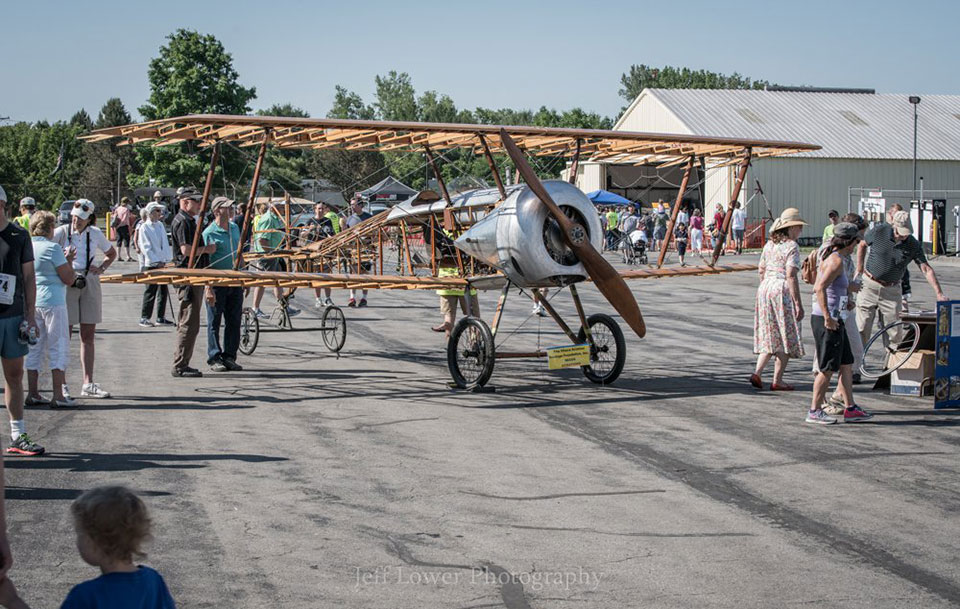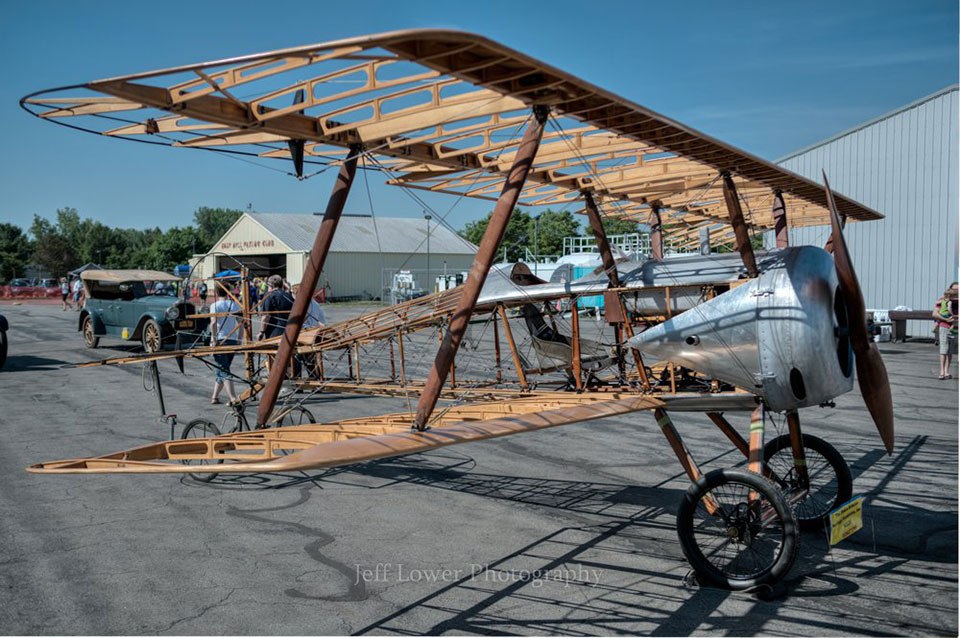World War I Airplane Comes Home for Restoration
February 1, 2017 - In the early 2000s, when Don Funke, EAA 652318, and a group of friends were discussing the history of aviation in their hometown of Ithaca, New York, they could only have dreamed that 15 years later they would be close to completing the restoration of a World War I airplane. That airplane is a Thomas-Morse S-4B Scout that the group hopes to have flying by the 100th anniversary of serial number A-4358’s first flight in summer 2018.
Going back more than 100 years gives a picture of the beginnings of vibrant aviation activity in the town of Ithaca. Two brothers, William and Oliver Thomas, moved to the area in 1914 with dreams of manufacturing airplanes. In 1917 they partnered with the Morse Chain Company to form the Thomas-Morse Aircraft Corporation.
“They were successful in winning a number of significant orders for what was then known as a high-performance single-seat trainer so that the pilots, which were so much in need, would have an ability to train in the United States before going to fly combat missions in World War I,” Don said.
After successfully fulfilling an order for 100 B model Scouts, the government put in another large order for the improved C model. In all, more than 600 World War I trainers left the factory Ithaca, making the Thomas-Morse Aircraft Corporation the largest supplier of World War I aircraft in the U.S. behind Glenn Curtiss.
Don and his friend then realized all three manufacturing plants used by Thomas-Morse were still standing and in nearly the same condition as they were 100 years ago. He said it was that finding that encouraged them to take the project seriously.
“The stage was set,” he said. “Having those three buildings still existing, with the exception of some of the Wright buildings in Dayton, Ohio, makes this the only place in the world where we were able to go back into a plant that existed 100 years ago and do a restoration on an airplane that was built there.”
So Don and his friends formed a nonprofit called the Ithaca Aviation Heritage Foundation to support the project and set out to find an airplane. This search presented a special set of challenges, though. Don and his friends had no money saved and no airplane to trade should they find the rare piece of history they were looking for.
“Realistically, we were dreaming,” said Don, who is now director of restoration for the project. “But it doesn’t cost anything to dream.”
The group found that there were only 12 Scouts left, half in museums and half under private ownership. Through what Don calls divine intervention, the San Diego Air and Space Museum had just recently removed A-4358 from their museum because its age was beginning to show.
The Ithaca Aviation Heritage Foundation was able to acquire the airplane, affectionately nicknamed Tommy, and brought it back home to be restored. What was already a special restoration was made even more so when the organization found out they would be able to use the original three Thomas-Morse factories as space to work on the restoration.
“For the most part a lot of it was done in the main plant, which has since closed,” Don said. “But we spent almost three years there restoring the airplane that we acquired, using some of the same tools and materials and machinery to restore an airplane that was built there in the same floor space 100 years later.”
The Ithaca Tompkins Regional Airport has also been a great supporter of the project, providing Tommy’s restoration crew with a heated shop.
Much of Tommy’s restoration is now complete. Volunteers for the project, including some members of EAA Chapter 811, recently finished covering the wings, and the original Le Rhône rotary engine has already been hung. The foundation is working with the FAA to get Tommy certified as an exhibition experimental. Don said he expects that ground work will begin in late 2017 and that Tommy will be ready to fly on its 100th birthday in 2018.
To follow the remainder of Tommy’s restoration, visit the Tommy Come Home website and the Ithaca Aviation Heritage Foundation’s Facebook page.


